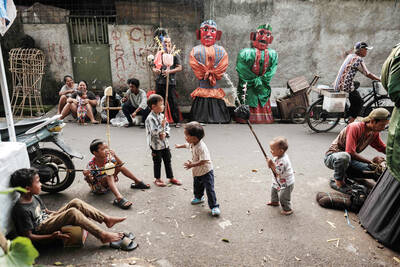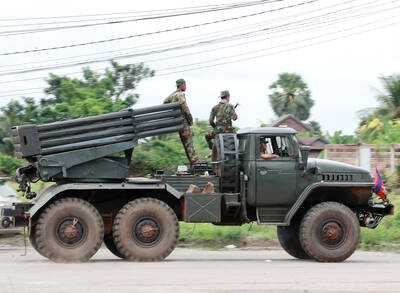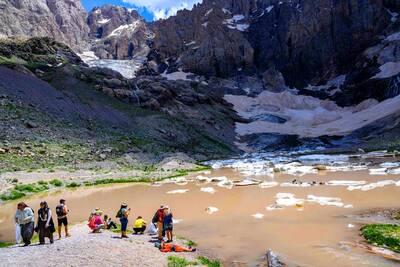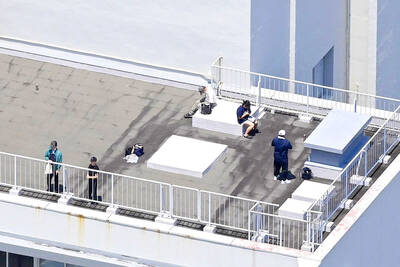A campaign by heirs of Polish aristocrats to recover a palace seized by the communists has exposed Poland’s continued failure to resolve the restitution of property to former owners after two decades of democracy.
The Branicki family says it has now decided to demand the return of the entire estate at Wilanow Palace, not just family heirlooms and archives as previously planned, because of frustration over lack of progress in a legal battle dating back to 1990.
The baroque palace of Wilanow, situated in a rolling green park in a southern suburb of Warsaw and now a museum, has been dubbed “the Polish Versailles.” It was built in the late 17th century by the Polish king Jan III Sobieski.
“We dream of returning to our home which was taken from us unlawfully by the communists. They took everything from us, including family heirlooms,” said Adam Rybinski, grandson of Adam Branicki, the last pre-World War II owner of the estate.
“We have been frustrated by the lack of cooperation from the government. The Ministry of Culture was not willing to seek a compromise with us, so we recently decided to file for return of the whole of the property,” Rybinski said this week.
However, the director of the Wilanow Museum said the palace was an important part of Poland’s national heritage and should remain in public hands to ensure continuity of its rich art collection and to preserve its educational mission.
“This is a special place for Poland’s ... cultural identity. We cannot take the risk that some of it may be sold off if in private hands. Unlike private businesses, museums worldwide are not profit-seeking institutions,” Pawel Jaskanis said.
“The Branickis’ lawsuit encompasses all the assets, that is some 6,000 objects, the library and the estate of about 90 hectares, including the palace,” Jaskanis said.
The total value of the whole estate could be as much as 1.3 billion zlotys (US$403.1 million), he said.
Jaskanis said the Polish state spent some 30 million zlotys of public funds every year to preserve the historic site, which has housed a museum open to the public since 1805.

In the sweltering streets of Jakarta, buskers carry towering, hollow puppets and pass around a bucket for donations. Now, they fear becoming outlaws. City authorities said they would crack down on use of the sacred ondel-ondel puppets, which can stand as tall as a truck, and they are drafting legislation to remove what they view as a street nuisance. Performances featuring the puppets — originally used by Jakarta’s Betawi people to ward off evil spirits — would be allowed only at set events. The ban could leave many ondel-ondel buskers in Jakarta jobless. “I am confused and anxious. I fear getting raided or even

POLITICAL PATRIARCHS: Recent clashes between Thailand and Cambodia are driven by an escalating feud between rival political families, analysts say The dispute over Thailand and Cambodia’s contested border, which dates back more than a century to disagreements over colonial-era maps, has broken into conflict before. However, the most recent clashes, which erupted on Thursday, have been fueled by another factor: a bitter feud between two powerful political patriarchs. Cambodian Senate President and former prime minister Hun Sen, 72, and former Thai prime minister Thaksin Shinawatra, 76, were once such close friends that they reportedly called one another brothers. Hun Sen has, over the years, supported Thaksin’s family during their long-running power struggle with Thailand’s military. Thaksin and his sister Yingluck stayed

Kemal Ozdemir looked up at the bare peaks of Mount Cilo in Turkey’s Kurdish majority southeast. “There were glaciers 10 years ago,” he recalled under a cloudless sky. A mountain guide for 15 years, Ozdemir then turned toward the torrent carrying dozens of blocks of ice below a slope covered with grass and rocks — a sign of glacier loss being exacerbated by global warming. “You can see that there are quite a few pieces of glacier in the water right now ... the reason why the waterfalls flow lushly actually shows us how fast the ice is melting,” he said.

Residents across Japan’s Pacific coast yesterday rushed to higher ground as tsunami warnings following a massive earthquake off Russia’s far east resurfaced painful memories and lessons from the devastating 2011 earthquake and nuclear disaster. Television banners flashed “TSUNAMI! EVACUATE!” and similar warnings as most broadcasters cut regular programming to issue warnings and evacuation orders, as tsunami waves approached Japan’s shores. “Do not be glued to the screen. Evacuate now,” a news presenter at public broadcaster NHK shouted. The warnings resurfaced memories of the March 11, 2011, earthquake, when more than 15,000 people died after a magnitude 9 tremor triggered a massive tsunami that